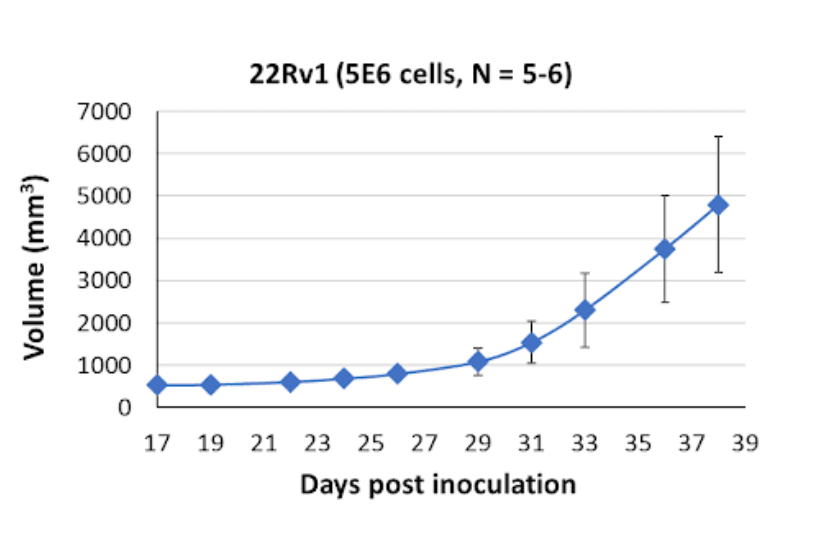About 22Rv1
The 22Rv1 cell line, established in 1999 from a xenograft of a human prostate tumor in immunodeficient mice, is an important model for studying prostate cancer. Morphologically, 22Rv1 cells exhibit epithelial characteristics and are cultured as adherent monolayers, providing a convenient system for in vitro experimentation.
The 22Rv1 cell line expresses androgen receptor (AR) and prostate-specific antigen (PSA), both of which are markers of prostate cancer. The presence of these markers in 22Rv1 cells confirms their origin from prostate cancer tissue and highlights their relevance in studying the disease. Importantly, the 22Rv1 cell line is unique in that it expresses both full-length and truncated forms of ARs. This mixed expression pattern is commonly observed in androgen deprivation resistant prostate cancers, making the 22Rv1 cell line a valuable model for studying the mechanisms underlying resistance to hormonal therapies.
Furthermore, the 22Rv1 cell line exhibits sensitivity to enzalutamide, a standard of care therapy for advanced prostate cancer patients. Enzalutamide is an androgen receptor antagonist that functions by inhibiting the binding of androgens to the receptor, thereby suppressing tumor growth. The responsiveness of 22Rv1 cells to enzalutamide underscores the clinical relevance of this cell line and its potential for evaluating therapeutic interventions targeting androgen receptor signaling.
22Rv1 Tumor Kinetics in the SRG™ Rat

In vivo models, specifically xenografts in the SRG rat, tumors derived from 22Rv1 cells display distinct characteristics. These tumors are fluid filled, vascularized, and exhibit necrotic regions. The fluid-filled nature of these tumors suggests the presence of cystic components, which may have implications for tumor growth and progression. Additionally, the vascularization of the tumors reflects the development of blood vessels to support tumor growth and provides an opportunity to investigate the tumor microenvironment and its influence on tumor behavior.
Products & Services
Xenograft Efficacy Studies
Includes collection of blood, tissues & tumor for ADME, PK/PD and analysis.
(Bi)weekly Tumor Sampling
Via fine needle aspiration (FNA). For longitudinal evaluation of drug exposure, histology and gene expression.
OncoRats
Cutting edge models optimized for engraftment.
Get help with your research by scheduling a call with Hera.
References (MLA):
- Blat, Eliot, and Ganesh Raj. “Molecular Mechanisms of Enzalutamide Resistance in Prostate Cancer.” CDR Journal, Apr. 2019, cdrjournal.com/article/view/3092.
- Saxena, Parmita, et al. “PSA Regulates Androgen Receptor Expression in Prostate Cancer Cells.” Wiley Online Library, 28 Sept. 2011, onlinelibrary.wiley.com/doi/10.1002/pros.21482.
- Singh, Shankar, et al. “Androgen Receptor Antagonists (Antiandrogens) Structure-Activity Relationships.” Http://Www.Eurekaselect.Com, 2000, www.eurekaselect.com/article/10714.
